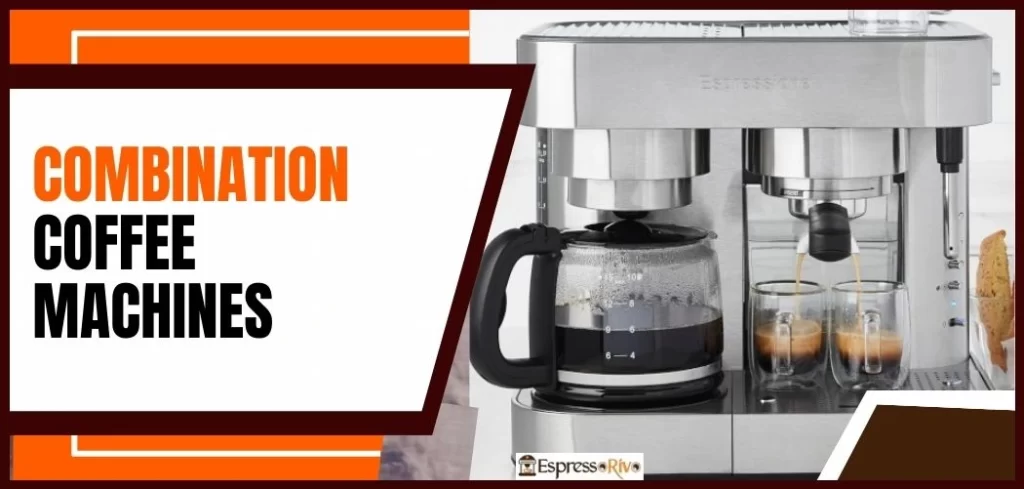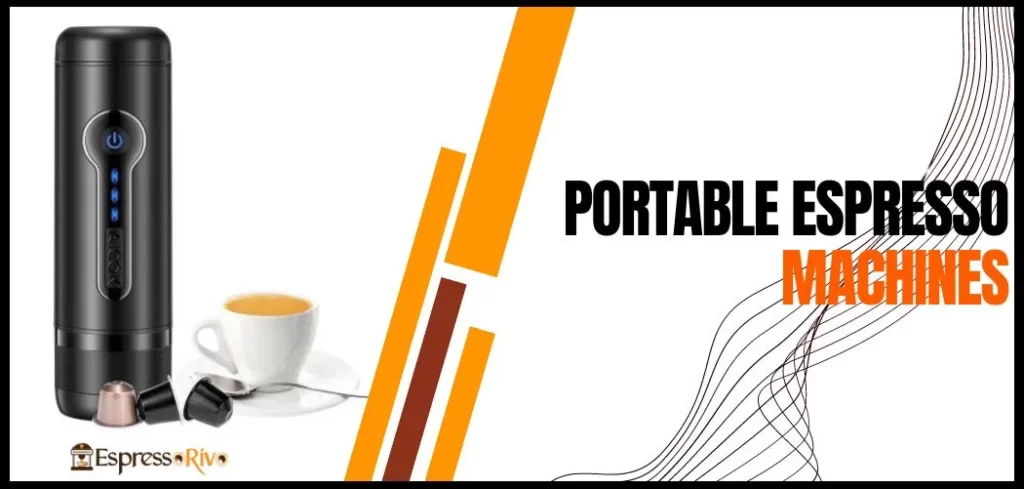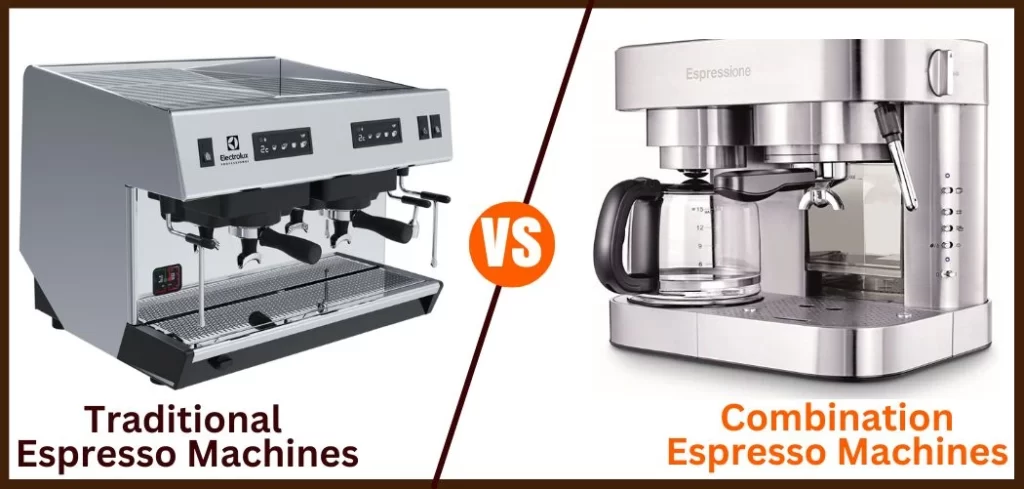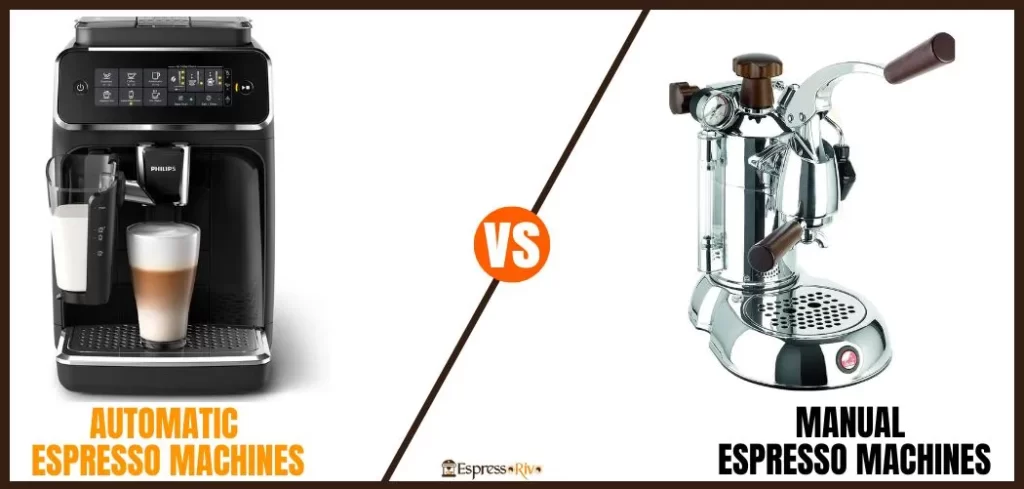Keeping your super-automatic espresso machine clean is key to ensuring the best coffee experience. A clean machine not only improves the flavor of your espresso but also extends the lifespan of your beloved coffee companion. In this comprehensive guide, we’ll dive into the importance of cleaning, hygiene considerations, and the impact of maintenance on machine longevity.
You may wonder why cleaning is so crucial for your super-automatic espresso machine. Over time, coffee residue can build up within the machine, affecting its performance and the quality of your brew. This residue can clog the brew group, hinder the grinder’s efficiency, and even lead to unpleasant flavors in your coffee. Regular cleaning helps prevent these issues and ensures your machine continues to deliver exceptional results.
Hygiene is another vital aspect to consider. Neglecting to clean your machine properly can create a breeding ground for mold, bacteria, and other harmful contaminants. With each cup of coffee you brew, you want the reassurance that it’s not only delicious but also safe to consume. By maintaining cleanliness, you protect your health and that of your loved ones.
Moreover, proper cleaning and maintenance contribute to the longevity of your machine. Components such as the brew group, grinder, milk frother, and water reservoir require regular attention to avoid malfunctions and costly repairs. Taking care of your super-automatic espresso machine ensures it remains a reliable and cherished part of your daily coffee routine for years to come.
Throughout this guide, we’ll provide a step-by-step process to clean each part of your machine effectively. From the brew group to the grinder and milk frother, we’ll cover all the essential components that require attention. Additionally, we’ll offer tips and best practices to make your cleaning routine as efficient and hassle-free as possible.
Why Cleaning is Important for Super-Automatic Espresso Machines
Coffee residue buildup and its impact
When you brew coffee with your super-automatic espresso machine, a residue of coffee oils and particles is left behind. Over time, this residue can accumulate in various parts of the machine, including the brew group, grinder, and coffee pathways. The consequences of neglected cleaning can be detrimental to both the machine and the quality of your coffee.
Coffee residue buildup can lead to clogged brew groups, hindering the proper extraction of coffee. This can result in under-extracted or over-extracted shots, affecting the taste and aroma of your espresso. Additionally, the oils from the coffee can become rancid when left uncleaned, leading to unpleasant flavors in your brew.
Hygiene considerations
Super-automatic espresso machines come into direct contact with water, milk, and coffee, providing an ideal environment for the growth of mold, bacteria, and other harmful contaminants. Without regular cleaning, these microorganisms can thrive and pose health risks.
Maintaining cleanliness is especially important for the milk frother, as milk residues can quickly spoil and create a breeding ground for bacteria. Consuming contaminated milk can lead to digestive issues and even foodborne illnesses. By regularly cleaning and sanitizing the milk frother, you ensure the safety and quality of your milk-based beverages.
Machine maintenance and longevity
Your super-automatic espresso machine is an investment that deserves proper care and maintenance. Neglecting to clean your machine can result in various issues that affect its performance and longevity.
Coffee residue can clog the grinder, leading to inconsistent grind sizes and potentially damaging the grinding mechanism. Additionally, mineral deposits from water, known as scale, can accumulate within the machine’s internal components. Scale buildup can block water flow, impair the heating elements, and eventually cause irreversible damage.
Regular cleaning and maintenance not only prevent these issues but also contribute to the longevity of your machine. By keeping your super-automatic espresso machine clean, you ensure it continues to deliver exceptional coffee for years to come.
Cleaning your machine is not just a chore—it’s an essential part of your coffee ritual. Embrace the process and take pride in caring for your beloved coffee companion. In the following sections, we’ll explore the step-by-step cleaning process for different components of your super-automatic espresso machine, empowering you to maintain cleanliness and enjoy outstanding coffee every time.
Understanding the Cleaning Process for Super-Automatic Espresso Machines
Components and parts to clean
To ensure optimal performance and the longevity of your super-automatic espresso machine, it’s important to understand the various components that require regular cleaning. Here are the key parts you need to focus on:
- Brew Group: The brew group is the heart of your espresso machine. It’s responsible for extracting the coffee and delivering it to your cup. Cleaning the brew group involves removing it from the machine, rinsing it under running water, and scrubbing away any coffee residue. Be sure to follow the manufacturer’s instructions for your specific model.
- Grinder: The grinder plays a crucial role in achieving a consistent grind size, which is essential for flavorful espresso. Regular cleaning of the grinder helps remove coffee oils and residue that can accumulate over time. Use a cleaning brush to dislodge any stuck particles and ensure the grinder is free from buildup.
- Milk Frother: If your machine has a milk frother, it requires regular cleaning to maintain its functionality and prevent the growth of bacteria. Depending on the type of frother, the cleaning process may involve disassembling, rinsing, and sanitizing the frothing wand or other components. Refer to your machine’s manual for specific instructions.
- Water Reservoir and Drip Tray: These components should be cleaned regularly to prevent mold growth and ensure hygienic brewing. Empty and rinse the water reservoir, and clean the drip tray with warm, soapy water to remove any coffee residue or buildup.
Recommended cleaning frequency
The frequency of cleaning your super-automatic espresso machine depends on various factors such as usage, water quality, and the manufacturer’s recommendations. As a general guideline:
- Brew Group: It’s recommended to clean the brew group at least once a week or as indicated by the manufacturer.
- Grinder: Clean the grinder every 2-4 weeks, depending on usage. Adjust the frequency if you notice any changes in the grind quality or detect rancid flavors.
- Milk Frother: If your machine has a milk frother, clean it thoroughly after each use. Regularly disassemble and sanitize the frother components to prevent milk residue buildup and ensure hygiene.
Remember, these are general recommendations, and it’s crucial to consult your machine’s manual for specific cleaning instructions and intervals.
Understanding the cleaning process and the components that require attention sets the foundation for maintaining a clean and efficient super-automatic espresso machine. In the next section, we’ll provide you with a step-by-step guide to help you navigate the cleaning process with ease, ensuring that your machine remains in top shape for exceptional coffee enjoyment.
Step-by-Step Guide to Cleaning Your Super Automatic Espresso Machine
Properly cleaning your super-automatic espresso machine is essential for maintaining its performance and ensuring the best coffee experience. Follow these step-by-step instructions to keep your machine in pristine condition:
- Gather your cleaning supplies: Before starting, gather the necessary cleaning supplies. This typically includes a cleaning brush, a cleaning agent recommended by the machine’s manufacturer, a microfiber cloth, and a small container for collecting wastewater.
- Power off and unplug the machine: For safety purposes, turn off your espresso machine and unplug it from the power source. This will prevent any accidental operations during the cleaning process.
Clean the brew group
- Remove the brew group: Consult your machine’s manual to learn how to safely remove the brew group. It may involve pressing a release button or lever.
- Rinse the brew group: Rinse the brew group under warm running water to remove any residual coffee grounds.
- Clean the brew group with a brush: Use a cleaning brush to scrub away any stubborn coffee residue. Pay close attention to the coffee outlet and gasket areas.
- Dry and reassemble: Once clean, dry the brew group with a clean cloth and reassemble it according to the manufacturer’s instructions.
Clean the grinder
- Empty the hopper: Remove any remaining coffee beans from the grinder hopper.
- Clean the grinder chute: Use a cleaning brush to dislodge any coffee particles from the grinder chute. Brush both the upper and lower burrs to ensure thorough cleaning.
- Wipe the hopper: Using a dry cloth, wipe the inside of the hopper to remove any oil or residue.
- Reassemble and run a few grams of coffee: Reassemble the grinder components and run a small amount of coffee beans through the grinder to ensure it’s clean and ready for use.
Clean the milk frother
- Refer to the machine’s manual: Different machines have different types of milk frothers, so it’s important to refer to the manual for specific cleaning instructions.
- Disassemble the frother: If applicable, disassemble the frother components as instructed in the manual.
- Clean with warm, soapy water: Wash the frother components with warm, soapy water. Pay attention to any hard-to-reach areas and use a brush or sponge if necessary.
- Rinse and sanitize: Rinse the components thoroughly with clean water and sanitize them according to the manufacturer’s instructions.
- Reassemble: Once the components are dry, reassemble the frother according to the manual.
Clean the water reservoir and drip tray
- Empty and rinse: Empty the water reservoir and rinse it with clean water. Remove the drip tray and discard any liquid.
- Clean with warm, soapy water: Wash the reservoir and drip tray with warm, soapy water. Use a brush or sponge to remove any stubborn residue.
- Rinse and dry: Rinse the reservoir and drip tray thoroughly with clean water. Dry them with a clean cloth before reattaching them to the machine.
- Run a cleaning cycle: Some super-automatic espresso machines have a self-cleaning feature or a dedicated cleaning cycle. Follow the manufacturer’s instructions to run the cleaning cycle, if applicable.
- Wipe the exterior: Finally, use a damp microfiber cloth to wipe the exterior of the machine, including the control panel and any other accessible surfaces.
Tips and Best Practices for Cleaning Your Super Automatic Espresso Machine
Cleaning your super-automatic espresso machine is a vital part of its maintenance routine. To ensure effective cleaning and optimize your machine’s performance, consider the following tips and best practices:
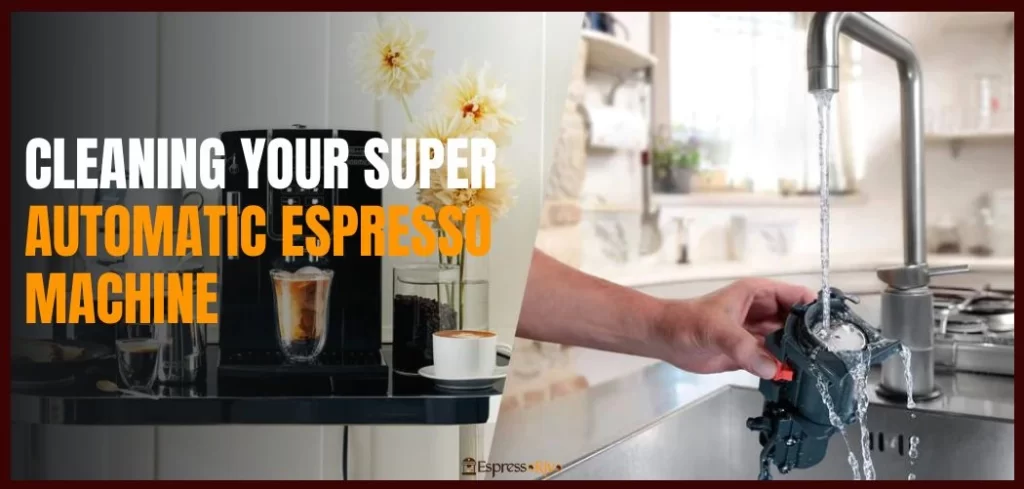
- Use manufacturer-recommended cleaning agents: Stick to cleaning agents specifically recommended by the manufacturer. Using the wrong cleaning solutions can potentially damage the machine or leave behind unwanted residues.
- Regular descaling: Apart from routine cleaning, it’s crucial to descale your machine regularly to remove mineral deposits. Follow the manufacturer’s instructions for descaling frequency and use appropriate descaling solutions to prevent scale buildup and potential damage to internal components.
- Clean the steam wand after each use: If your machine has a steam wand, make it a habit to purge and wipe it after every use. This helps prevent milk residue from drying and clogging the wand, ensuring proper functionality and hygiene.
- Pay attention to water quality: The quality of water you use in your super-automatic espresso machine can impact its longevity. If your area has hard water, consider using filtered or bottled water to minimize mineral buildup and scale formation. This will also contribute to better-tasting coffee.
- Keep cleaning tools handy: Store the necessary cleaning tools, such as brushes and clothes, near your machine for easy access. This encourages regular cleaning and makes the process more convenient.
- Follow a cleaning schedule: Establish a cleaning schedule based on your machine’s needs, usage frequency, and manufacturer recommendations. Consistency is key to maintaining a clean and well-functioning super-automatic espresso machine.
- Perform a deep cleaning periodically: In addition to regular cleaning, schedule a deep cleaning session for your machine at least once every few months. This involves disassembling various parts, such as the brew group and grinder, and thoroughly cleaning them. Refer to the manufacturer’s instructions for guidance.
- Stay organized: Keep the machine’s manual and any cleaning guides in a readily accessible place. This will help you reference specific cleaning instructions, troubleshoot issues, and ensure you’re following the proper cleaning procedures.
Clean machine not only produces better-tasting coffee but also prolongs the lifespan of your investment. By incorporating these tips and best practices into your cleaning routine, you’ll enjoy consistently excellent coffee and ensure your super-automatic espresso machine remains in top condition for years to come.
Conclusion
Regularly cleaning your super-automatic espresso machine is the key to maintaining its performance, ensuring the longevity of its components, and enjoying delicious cups of coffee. By following the step-by-step guide and implementing the tips and best practices outlined in this article, you can keep your machine in pristine condition and guarantee a consistently exceptional coffee experience.
Cleaning your machine is not just about aesthetics. It also plays a crucial role in preventing coffee residue buildup, eliminating stale flavors, and preventing clogs that can affect the machine’s functionality. Neglecting cleaning can lead to poor coffee quality, decreased machine efficiency, and even costly repairs.
A few minutes invested in cleaning and maintenance can save you hours of frustration and help you extract the best flavors from your coffee beans. Make it a habit to incorporate cleaning into your coffee routine, following the manufacturer’s instructions and recommendations for your specific machine model.
Additionally, always pay attention to water quality, descale your machine regularly, and keep your cleaning tools within reach. Following these practices will ensure that your super-automatic espresso machine consistently delivers outstanding coffee and remains in optimal condition for years to come.
Ronsil
Meet Ronsil, the master barista behind EspressoRivo. With years of experience in the coffee industry, he brings a wealth of knowledge and passion to the table. As the owner of a successful coffee shop, Ronsil is a sought-after adviser in the field. His expertise and love for the craft shines through in every cup he serves. We are honored to have him as part of our team at EspressoRivo

